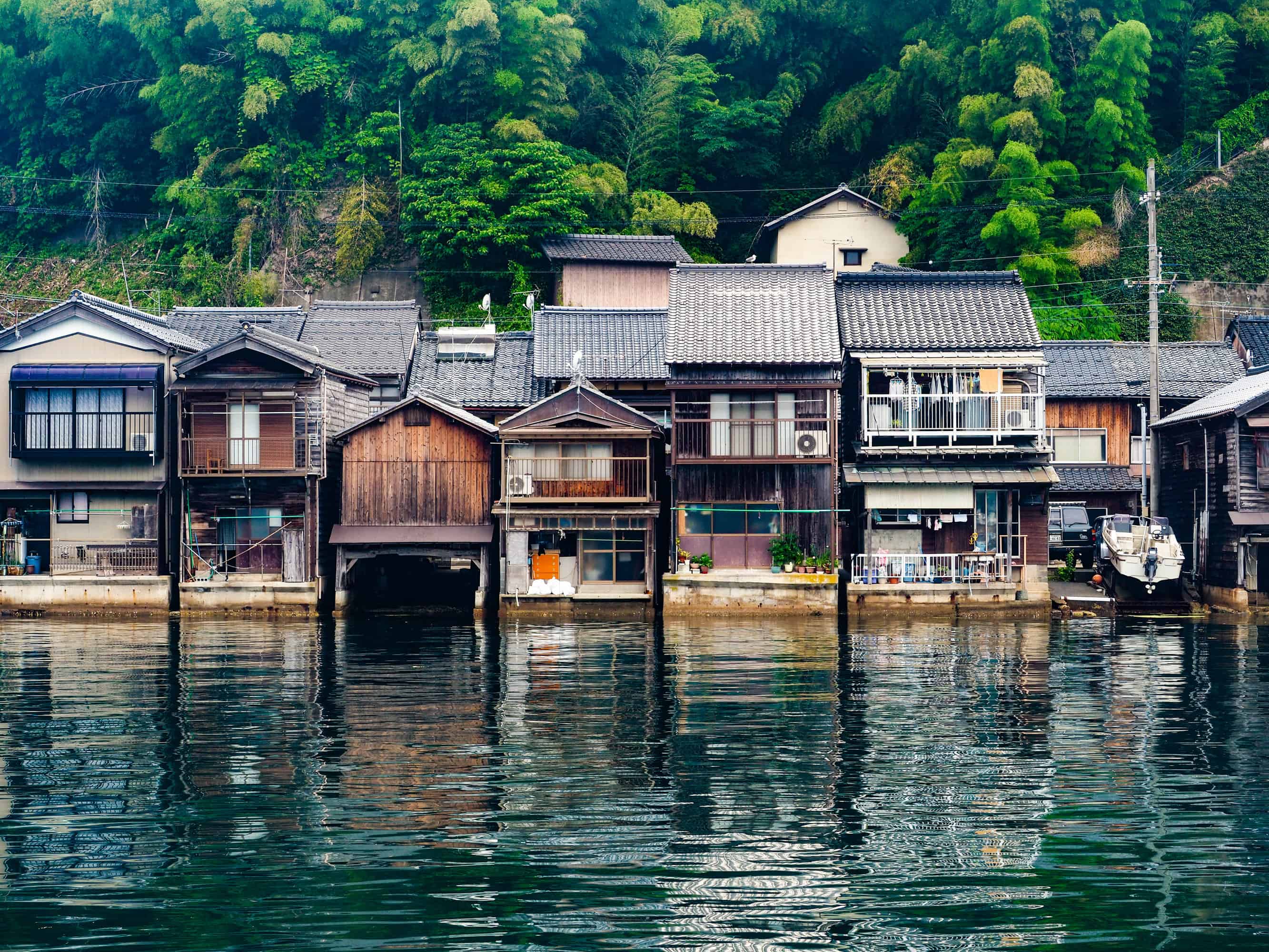In Japanese, the word anaba refers to a hidden gem or a well-kept secret. Kyoto’s hundreds of Buddhist temples and shrines, charming villages and sweeping landscapes fit neatly into this oh-so-desirable category that’s always of particular interest to travelers looking for an authentic experience.
If it’s your second or third time visiting Kyoto, or you simply want to step away from the more common tourist stops for a more solo experience and a chance to see where the locals go, check out these hand-picked, unforgettable destinations.
Serene Temples
Adashino

Starting in northern Kyoto, one of the city’s most dramatic Buddhist temples is the Adashino Nenbutsu-ji, located at the site of a former burial ground in the city’s Sagano area. The temple’s 8,000 stone statues stand side-by-side along the rocky hilltop, representing the abandoned souls of the bodies that were once unceremoniously left behind.
Every year on August 23 and 24, each tombstone is lit with a candle and honored by chanting monks in a ritual called Sento Kuyo. After paying your respects, make sure to check out the residential area surrounding this temple. Lined with traditional thatched houses (machiya), it will give you an idea of what a 19th century Japanese village looked like.
Nanzen-ji

Heading east, you’ll find the Nanzen-ji temple in Northern Higashiyama, the perfect place to explore ancient temple grounds without lots of foot traffic. Located among rolling green hills and lush tree gardens, the site of this Meiji-era Zen temple is notable for the massive working aqueduct that runs through it. Don’t miss your chance to walk along the ancient arched structure, which was built in the 19th century to carry water and goods between Kyoto and the neighboring Shiga Prefecture.
Lush Gardens and Scenery
Rakusai

One of Kyoto’s most photographed sites is the Arashiyama bamboo grove, but if you’re looking for a similar setting with fewer crowds, venture to Rakusai Bamboo Park in western Kyoto. Many people stumble upon the park by accident and are delighted to find its stone-studded trails free of pedestrians. Come for the photos, stay for the 110 varieties of bamboo.
Shokado

Another Kyoto wonder is the Shokado Garden Art Museum which honors the medieval Buddhist priest Shokado Shojo who lived nearby and was known for his love of culture, from calligraphy to tea ceremony. At first glance, this stunning destination appears to be a dreamscape of moss and bamboo. But as you wander through the gardens filled with cherry, maple and plum trees, you can stop into an exhibition space with calligraphy work and paintings, and peek into any of the three small tea houses on the grounds (open in spring and fall). Make sure to leave extra time for this one – you won’t want to rush through it.
Murin-an

Another secret garden lies behind the gates to Murin-an Villa, a centuries-old compound that belonged to Japanese Prime Minister Yamagata Arimoto in the 19th century and marries Japanese and Western influences. If you blink, you’ll miss it: Visitors must walk through a narrow gateway in the southern end of the estate to find a picture-perfect landscape. Like something out of a storybook, the garden extends out from the Higashiyama mountain range behind it. It is especially stunning in autumn, when the trees are in full color.
Distinct Villages
Dreamton

One thing you don’t expect to see in Japan is a typical English village, but Dreamton brings a taste of the British Isles to the Kameoka area of the Kyoto Prefecture. The collection of five buildings were erected only in the last decade by a Japanese Anglophile and made to look like they were plucked directly from the UK, with one shop serving afternoon tea and the British classic, fish and chips. If you want the authentic England-in-Japan experience, you can also attend church, grab a drink and stay overnight in a bed and breakfast.
Ine Fishing Village

And this one’s really off the beaten path: Ine fishing village, a remote seaside location complete with deep blue waters just a dive away from residents’ back doors. The forest-covered mountains complement Ine’s rustic boat houses (funaya) as fishing is the primary industry here. Located 15 kilometers north of Amanohashidate Station, this quaint village (population: 2,200) is a welcome reprieve from city life.

